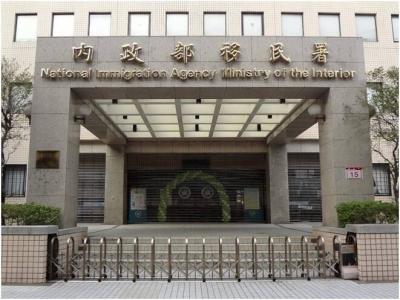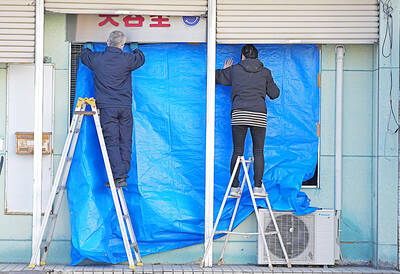More than 1,000 dead fish that were discovered on Monday in Jingualiao Creek (金瓜寮溪), a tributary of a creek that runs into the Feitsui Reservoir in New Taipei City, sparked concerns over the safety of drinking water in the greater Taipei area, home to more than 5 million residents.
Water quality tests conducted jointly by the Taipei Feitsui Reservoir Administration, the Taipei Water Management Office and the Pinglin District Office later on the same day showed that both the acidity and oxygen content of the water in the reservoir are within normal ranges.
This indicated that the fish did not die because of bad water quality and that the water in the reservoir is safe to drink, officials said.
The dead fish were discovered in the lower reaches of Jingualiao Creek, 100m south of Lirenban Bridge, just before the creek joins with Beishih Creek, which runs directly into the reservoir.
A similar incident happened in August last year.
Local residents suspected that the incident on Monday might have been a case of poachers using a pesticide called rotenone to collect fish.
Cuku Borough (粗窟) Warden Wang Cheng-yi (王成意) said that the pesticide could have been used to obtain large quantities of fish with high economic value such as ayu — also known as sweet smelts — which breed from this month to September every year.
Officials with the Taipei Feitsui Reservoir Administration said that they have handed samples of the dead fish to relevant agencies for a comprehensive autopsy report to pinpoint the cause of death.
The administration has also dispatched personnel to clean up the rest of the fish, which are to be incinerated, officials said.
The officials said that even though the incident took place outside the reservoir, it has caused severe concern among residents of the Greater Taipei area.
To prevent such an incident from recurring, officials from the Taipei Feitsui Reservoir Administration said they have filed a report with the New Taipei City Police Department to start a investigation for possible suspects in the potential poaching incident.

A small number of Taiwanese this year lost their citizenship rights after traveling in China and obtaining a one-time Chinese passport to cross the border into Russia, a source said today. The people signed up through Chinese travel agencies for tours of neighboring Russia with companies claiming they could obtain Russian visas and fast-track border clearance, the source said on condition of anonymity. The travelers were actually issued one-time-use Chinese passports, they said. Taiwanese are prohibited from holding a Chinese passport or household registration. If found to have a Chinese ID, they may lose their resident status under Article 9-1

Taiwanese were praised for their composure after a video filmed by Taiwanese tourists capturing the moment a magnitude 7.5 earthquake struck Japan’s Aomori Prefecture went viral on social media. The video shows a hotel room shaking violently amid Monday’s quake, with objects falling to the ground. Two Taiwanese began filming with their mobile phones, while two others held the sides of a TV to prevent it from falling. When the shaking stopped, the pair calmly took down the TV and laid it flat on a tatami mat, the video shows. The video also captured the group talking about the safety of their companions bathing

PROBLEMATIC APP: Citing more than 1,000 fraud cases, the government is taking the app down for a year, but opposition voices are calling it censorship Chinese Nationalist Party (KMT) Chairwoman Cheng Li-wun (鄭麗文) yesterday decried a government plan to suspend access to Chinese social media platform Xiaohongshu (小紅書) for one year as censorship, while the Presidential Office backed the plan. The Ministry of the Interior on Thursday cited security risks and accusations that the Instagram-like app, known as Rednote in English, had figured in more than 1,700 fraud cases since last year. The company, which has about 3 million users in Taiwan, has not yet responded to requests for comment. “Many people online are already asking ‘How to climb over the firewall to access Xiaohongshu,’” Cheng posted on

A classified Pentagon-produced, multiyear assessment — the Overmatch brief — highlighted unreported Chinese capabilities to destroy US military assets and identified US supply chain choke points, painting a disturbing picture of waning US military might, a New York Times editorial published on Monday said. US Secretary of Defense Pete Hegseth’s comments in November last year that “we lose every time” in Pentagon-conducted war games pitting the US against China further highlighted the uncertainty about the US’ capability to intervene in the event of a Chinese invasion of Taiwan. “It shows the Pentagon’s overreliance on expensive, vulnerable weapons as adversaries field cheap, technologically